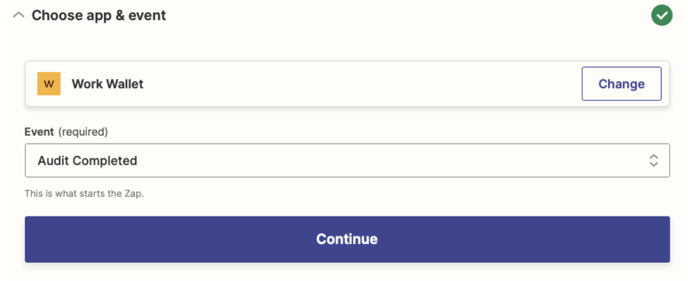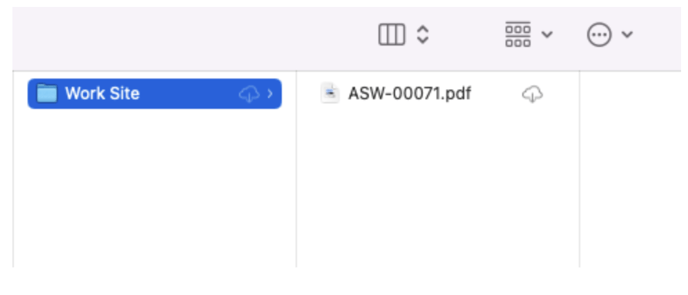What Is Zapier Event: Audit Completed?

With Zapier, you can integrate with over 5,000 other applications to provide rich data sharing options. If you haven't yet got started with Zapier, please see our other guide for Integrating with Zapier.
In this article, we are looking at the specific 'Audit Completed' Event which can be found in Work Wallet's Zapier Event list.
When creating your Zap, first select the Work Wallet application, then the 'Audit Completed' Event. Click to Continue.

Select your Work Wallet account and Test the Trigger to continue to your action.
In this example, we will look at a Zap to store the completed Audit document in OneDrive, but you can use the basis of this guide to create any integration your imagination can muster!
First, choose your app & event - in this example, the app is OneDrive and the Event is 'Upload File'
Then, you need to set up the action you want the Zap to take when a new Audit document is created. There are 6 data points that will come over with the Audit data, and you can use this information to form part of the actions that you want to complete.

- Audit Date and Time - The noted date in Work Wallet the Audit was completed
- Audit Identifier - A unique ID to support integrations
- Audit Type - The type of Audit completed
- Audit Document - the URL of the Audit file
- Audit Operating Location - The location the Audit was completed at. This will either return the name of the site or the name given to the General Location
- Audit Reference - The unique Work Wallet Audit / Document Reference
We can use these data points to customise our OneDrive integration as desired. Firstly, we need to choose which folder to put the document in. If the folder doesn't exist, Zapier will create a new folder with the name specified.
In this example, we have created a root folder called /Zapier and then a Sub Folder with the name of the site the Audit was completed at. This can be helpful as any subsequent Audits completed at this site, will also get saved in the corresponding folder.
To do this, we have selected the 'Custom' folder option and manually added the /Zapier/ folder name. After that we have selected the 'Audit Operating Location' data point, which will dynamically create the folder, based on the site name.

Then, we need to select the file. This is as simple as selecting the 'Audit Document' data point as shown below.

The final step is to then set the file name. You can take some creative liberty here such as using the Site Name, Audit Type or custom wording - or you can simply choose the 'Audit Reference' data point.
Important: You must add a .pdf file extension at this stage, for the document to import correctly.

That's it! Test your action to check everything's working as expected, by either viewing your OneDrive online or on your desktop device sync. Any new folders will be created automatically and your new Audit document will be saved and ready to view.

